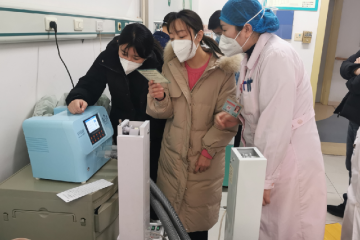Preventing Future Tragedies

The Scale of Exposure
The water contamination tragedy at Camp Lejeune was not only widespread but also sustained over a significant period, leading to extensive exposure among military personnel and their families. The contaminants of concern, primarily trichloroethylene (TCE), perchloroethylene (PCE), and vinyl chloride, were present in the base’s water supply at levels exceeding safety standards.
- The National Research Council (NRC) report in 2009 highlighted limited but suggestive evidence linking exposure to mixed solvents with neurobehavioral effects.
- Health effects from these contaminants could have occurred at levels below the detection threshold of toxicological studies, which often focus on high doses and may not fully represent the human experience.
The implications of such exposure are profound, with potential health impacts that may have been undetectable at the time but could manifest over the long term. This underscores the need for comprehensive monitoring and stringent safety protocols to prevent similar occurrences in the future.
Health Impacts on Military Personnel and Families
The water contamination at Camp Lejeune has had a profound impact on the health of military personnel, their families, and other residents. The consumption of toxic water over several decades has been linked to severe medical conditions that have significantly limited the quality of life for many affected individuals.
The scale of this tragedy is immense, with close to one million people impacted by the contamination. The range of adverse health effects experienced by those exposed includes various forms of cancer, birth defects, and other debilitating illnesses. These health issues not only affect the physical well-being of the survivors but also impose emotional and financial burdens on the families involved.
Despite the passage of time, justice remains elusive for those who continue to suffer from the consequences of the contaminated water. The Camp Lejeune survivors can seek compensation for illnesses caused by water contamination, with legal assistance available for filing claims under the Camp Lejeune Justice Act (CJLA).
Environmental Consequences
The contamination at Camp Lejeune had a profound impact on the environment, leading to the pollution of soil, water, and air. The toxic substances, including benzene, perchloroethylene, and trichloroethylene, seeped into the groundwater, affecting not only the base’s population but also the surrounding ecosystems. This resulted in significant habitat loss and posed serious risks to wildlife in the area.
Long-term environmental degradation is another grim legacy of the contamination. The effects of these toxic substances can persist for decades, altering the landscape and undermining the health of the environment. The repercussions extend beyond immediate health concerns, as they compromise the ecological balance and the natural resources that future generations depend on.
In response to the tragedy, there has been an increased focus on the importance of proactive planning and preparedness. Authorities are now more aware of the need to establish emergency protocols and conduct regular drills to ensure readiness for such unforeseen emergencies. For the victims of the Camp Lejeune water contamination, information on disability benefits and health care is crucial, as is understanding the eligibility criteria for VA benefits and relief options under the Camp Lejeune Justice Act of 2022.
Historical Context and Causes of Contamination
Timeline of Water Contamination Discovery
The discovery of water contamination at Camp Lejeune was a pivotal moment in understanding the extent of the environmental and health crisis faced by military personnel and their families. The timeline of events reveals a prolonged period during which contaminants were present in the water supply:
- November 1957: The earliest suspected date when water contamination may have begun at Camp Lejeune.
- Early 1980s: Testing of the water supply at Camp Lejeune uncovers the presence of volatile organic compounds, including trichloroethylene (TCE) and perchloroethylene (PCE).
- February 1985: The contaminated supply wells are finally shut down, marking the end of the exposure period.
This timeline indicates a span of nearly three decades during which nearly 900,000 individuals were potentially exposed to harmful chemicals. The delay in identifying and addressing the contamination allowed for an extended period of exposure, underscoring the importance of vigilant water testing and swift action in response to potential hazards. The subsequent litigation and investigations would reveal the sources of contamination, including industrial spills and an off-base dry cleaning facility, highlighting the complex nature of environmental oversight and the critical need for proactive measures.
Sources of Toxic Chemicals
The contamination of water at Camp Lejeune was primarily due to two harmful chemicals: Perchloroethylene (PCE) and Trichloroethylene (TCE). These toxic substances, classified as volatile organic compounds (VOCs), were found at dangerously high levels in the base’s water supply systems, specifically at the Hadnot Point and Tarawa Terrace water treatment plants.
The presence of these chemicals in the water was linked to waste disposal sites and underground storage tanks that discharged hazardous substances into the groundwater. Despite the closure of most tanks by February 1985, the legacy of exposure to these carcinogens continues to affect many individuals.
Victims of the contamination at Camp Lejeune have the right to seek justice and compensation for the harm caused by these toxins. Eligibility for filing claims requires proof of exposure and a direct link between the illness and the toxic chemicals present in the water during the period from 1953 to 1987. Advocates are available to assist in the claim filing and processing to ensure that those affected receive the support they need.
Delays in Camp Lejeune Litigation
The path to justice for the victims of Camp Lejeune’s water contamination has been fraught with delays and legal complexities. As the Senate passed the bill to address the grievances of those affected, a surge in litigation was anticipated, with numerous lawsuits expected to be filed in the U.S. District Court in North Carolina. Efforts to consolidate these cases into a Multi-District Litigation (MDL) were seen as likely, given the advantages of managing similar claims en masse.
Victims, with the assistance of legal counsel, have sought compensation through the Camp Lejeune lawsuit to alleviate the emotional and financial burdens they have endured. The potential wrongful death payouts hinge on a multitude of factors, with the severity of illnesses linked to the toxic exposure being a primary consideration.
The government’s settlement program and the variability in settlement amounts have been points of discussion among claimants. Information regarding the lawsuit settlements and the process for obtaining a free evaluation from lawyers have become critical resources for those seeking redress. The consolidation of lawsuits not only aims to streamline the legal process but also sets the stage for a more efficient resolution, potentially leading to a comprehensive settlement agreement.
The Legal Aftermath and Pursuit of Justice
Camp Lejeune Water Contamination Lawsuit
The Camp Lejeune water contamination lawsuit represents a significant legal battle for justice, stemming from the decades-long exposure of military personnel and their families to toxic chemicals in the base’s water supply. From 1957 to 1987, individuals at the base suffered from various severe illnesses, with many cases proving fatal.
Victims seeking compensation must navigate a complex legal process, often requiring the assistance of specialized lawyers. The potential passage of the Camp Lejeune Justice Act could pave the way for affected parties to file toxic tort lawsuits in federal court, specifically the U.S. District Court for the Eastern District of North Carolina.
The criteria for eligibility in such lawsuits are stringent, and claimants must meet specific qualifications to pursue their cases. The lawsuit’s outcome, including any wrongful death payouts, hinges on numerous factors, with the severity of disease linked to the contamination being a primary consideration. The legal journey for many has been arduous, with the hope that a consolidated effort will lead to a fair and timely resolution.
Challenges in Seeking Recourse
Victims of the Camp Lejeune water contamination faced a labyrinth of legal challenges when seeking justice and compensation. The complexity of the legal system, coupled with the aggressive marketing tactics of some law firms, added to the distress of those affected. Law firms vying to represent the victims sometimes crossed ethical boundaries, leading to accusations of violating the Telephone Consumer Protection Act (TCPA) through unsolicited robocalls and proposed class action lawsuits against these firms.
The pursuit of recourse was further complicated by the following factors:
- Navigating Legal Complexities: Understanding the intricate legal processes and regulations was a daunting task for many victims.
- Ethical Considerations: Law firms had to balance their need to reach out to potential clients with the necessity to adhere to ethical marketing practices.
- Delayed Litigation: The slow pace of legal proceedings often meant that victims had to wait years for a resolution.
These challenges highlight the need for a more victim-centric approach in legal proceedings, ensuring that those who have suffered due to negligence are not further victimized by the system designed to protect them.
The Role of Negligence and Wrongful Actions
The tragedy at Camp Lejeune underscores the devastating consequences of negligence and wrongful actions by those responsible for ensuring the safety of water supplies. The contamination was not merely an unfortunate incident but a result of a series of failures that could have been prevented.
- Failure to Monitor: Despite the presence of hazardous substances, there was a lack of adequate monitoring and timely testing of the water supply.
- Ignoring Warnings: Early warnings and complaints about water quality were dismissed or not taken seriously by the authorities.
- Delayed Disclosure: Information about the contamination was not promptly shared with the affected populations, leading to prolonged exposure.
- Inadequate Response: Once the contamination was acknowledged, the response was slow and insufficient to address the health and environmental risks.
These lapses in responsibility and care have led to long-term health issues for many individuals and have sparked a series of legal battles aimed at seeking justice and compensation for the victims. The Camp Lejeune case serves as a stark reminder of the importance of vigilance and accountability in managing environmental health risks.
Preventative Measures and Water Safety Regulations
Importance of Proactive Planning
Proactive planning is the cornerstone of effective crisis management, particularly in the context of environmental health emergencies. By anticipating potential risks and establishing robust emergency protocols, authorities can significantly reduce the impact of such events on public health and safety. Regular drills and preparedness exercises are essential in ensuring that response teams are well-equipped and ready to act swiftly when a crisis unfolds.
Key elements of proactive planning include:
- Identifying potential hazards and vulnerabilities within the community.
- Developing clear and actionable emergency response plans.
- Training personnel and conducting regular drills to test the effectiveness of plans.
- Engaging with stakeholders to foster collaboration and information sharing.
Timely intervention during public health emergencies is not just about immediate action; it’s about the groundwork laid well before any threat becomes a reality. This involves mobilizing resources, coordinating multi-agency efforts, and ensuring clear communication channels are in place. When authorities prioritize proactive planning, they demonstrate a commitment to safeguarding the well-being of the community and the environment.
Advancements in Water Treatment Technologies
The evolution of water treatment technologies has been pivotal in preventing contamination and ensuring the safety of drinking water. Modern filtration, disinfection, and purification techniques have become more sophisticated, targeting a wide array of contaminants such as bacteria, chemicals, and pollutants. These advancements not only remove impurities but also play a crucial role in mitigating risks and preventing waterborne illnesses.
Public awareness of these technologies is on the rise. According to a survey by the National Sanitation Foundation (NSF), 71% of Americans recognize the effectiveness of water treatment units in reducing contaminants. These units, which include reverse osmosis (RO) systems and various filters, are increasingly seen as essential for home safety. Furthermore, 72% of survey participants believe that certain home treatment units outperform others, indicating a discerning approach to selecting water treatment solutions.
The regrettable events at Camp Lejeune highlight the importance of such technologies. While the advanced systems of today were not available during the period of contamination, even the limited options of the past could have provided some level of mitigation. Now, with the benefit of scientific progress, innovative tools are available that enable consumers to tackle contamination issues effectively within their own homes.
Investment in these technologies is not only a measure of public safety but also a demonstration of a commitment to community well-being. Ensuring the availability and proper implementation of water treatment options is essential to prevent future tragedies akin to the Camp Lejeune incident and to protect the health of communities.
Implementing Stringent Safety Protocols
The implementation of stringent safety protocols is a critical step in ensuring the integrity of water sources and the health of communities. These protocols involve a series of measures designed to monitor, control, and eliminate potential contaminants from water supplies. Key components of these safety protocols include:
- Establishing standards for water quality testing to detect hazardous substances promptly.
- Mandating regular maintenance and inspection of water treatment facilities to prevent system failures.
- Requiring immediate reporting and response to any signs of water contamination to minimize health risks.
Adherence to these protocols is not only about compliance with regulations; it is about a commitment to public health and safety. Authorities must be vigilant in enforcing these measures and ready to take urgent action when standards are not met. This proactive approach can significantly reduce the likelihood of future tragedies and serve as a model for water safety management worldwide.
The Critical Need for Transparency and Accountability
Lessons in Public Health Communication
The tragedy at Camp Lejeune underscores the imperative need to enhance communication during environmental health crises. Ensuring the public is informed about potential risks and necessary precautions is not just a matter of protocol, but a critical component of community safety and trust. Improving communication channels can lead to greater transparency and foster a sense of reliability between authorities and the communities they serve.
Key steps to improve public health communication include:
- Establishing clear and consistent messaging across all platforms.
- Engaging with community members to actively listen and address their concerns.
- Providing timely and accurate updates on situations, including potential hazards and recommended actions.
Effective communication is not a one-way street; it requires active dialogue and a willingness to address the questions and concerns of residents. By prioritizing these communication strategies, authorities can build trust and facilitate cooperation, which is essential in responding to environmental health crises. The lessons learned from Camp Lejeune highlight the importance of transparency, accountability, and the urgency of safeguarding public health to prevent future tragedies.
Holding Authorities Accountable
The tragedy at Camp Lejeune underscores the critical need for accountability among authorities when managing public health crises. It is imperative that those in positions of power are held responsible for their actions—or inactions—that lead to environmental health disasters. Accountability not only serves as a deterrent for future negligence but also as a form of justice for those affected.
- Promote transparency in government and military operations to empower individuals to make informed decisions and advocate for their rights.
- Ensure timely and accurate information dissemination during environmental health crises through effective communication channels.
- Foster open dialogue with affected communities to build trust and facilitate cooperation in response to crises.
The pursuit of accountability must be relentless and transparent, allowing the public to see that measures are being taken to prevent future tragedies. This includes recognizing the importance of water safety regulations and implementing advanced water treatment options. By learning from the past and enhancing transparency, authorities can better communicate risks and take urgent measures to safeguard public health, thereby upholding democratic values and ensuring the well-being of all citizens.
The Impact of Delayed Response
The repercussions of a delayed response to public health emergencies can be severe and long-lasting. In the case of Camp Lejeune, the time lost in acknowledging and addressing the water contamination had profound effects:
- Increased Health Risks: The longer the exposure to toxic substances, the greater the risk of developing serious health conditions. Delayed action can result in a higher incidence of diseases among the affected population.
- Erosion of Trust: When authorities fail to act swiftly, public trust erodes. This can lead to skepticism about future safety assurances and hinder cooperation in emergency situations.
- Economic Burden: Delays in response not only affect health but also impose economic strains on individuals and communities, as they deal with medical expenses and loss of income due to illness.
- Environmental Damage: The environment may suffer irreversible damage due to prolonged exposure to contaminants, complicating restoration efforts and leading to a loss of biodiversity.
Timely intervention is crucial to mitigate these impacts. It involves immediate assessment, resource mobilization, and coordinated efforts to provide assistance and prevent further harm. The lessons from Camp Lejeune underscore the necessity for authorities to act decisively and transparently to protect public health and safety.
Prioritizing Prompt Response to Public Health Emergencies
Establishing Emergency Protocols
In the wake of the Camp Lejeune tragedy, the importance of establishing robust emergency protocols has become undeniably clear. These protocols serve as a blueprint for action during public health emergencies, ensuring that all necessary steps are taken swiftly and effectively to mitigate harm and protect public safety.
Key elements of effective emergency protocols include:
- Resource Mobilization: Assembling and deploying resources, including medical teams and clean water supplies, to the affected areas promptly.
- Effort Coordination: Aligning the actions of various agencies and stakeholders to ensure a unified and efficient response.
- Evacuation Plans: Preparing for the possibility of relocating residents from hazardous zones to ensure their safety.
Proactive planning and regular drills are not just theoretical exercises; they are practical measures that test the readiness of emergency services and the community at large. By conducting these drills, authorities can identify potential weaknesses in their response plans and make necessary adjustments. Moreover, such preparedness demonstrates a commitment to public well-being and can significantly reduce the adverse effects of environmental health crises.
Effective communication is also a cornerstone of emergency response. Keeping the public informed with timely and accurate information helps to manage the situation more transparently and fosters trust. Utilizing various communication channels, including press releases and public announcements, ensures that information reaches a broad audience, allowing individuals to take informed actions to protect themselves and their families.
Conducting Regular Drills and Preparedness
The importance of regular drills and preparedness cannot be overstated in the context of public health emergencies. These exercises serve as a rehearsal for the real event, ensuring that all personnel are familiar with their roles and responsibilities. Regular drills help to identify any gaps in the emergency protocols, providing an opportunity for continuous improvement.
Key steps in conducting effective drills include:
- Establishing clear objectives for each drill.
- Involving all relevant stakeholders, from first responders to local government officials.
- Simulating realistic scenarios that could occur in the community.
- Debriefing after each drill to discuss what worked well and what needs adjustment.
By integrating these practices into routine safety protocols, communities can enhance their resilience against potential crises. The lessons learned from Camp Lejeune underscore the need for such diligence in safeguarding public health.
The Ongoing Struggle for Justice
The pursuit of justice for the victims of Camp Lejeune’s water contamination is a testament to resilience and determination. Despite the passage of time, affected individuals and their families continue to seek redress and accountability for the harm they have suffered. The legal journey has been fraught with obstacles, including complex litigation processes and the challenge of proving causation between exposure and illness.
Key aspects of this ongoing struggle include:
- Persistence in Legal Efforts: Advocates and victims persist in their legal battles, pushing for recognition and compensation despite numerous hurdles.
- Support Networks: Community groups and non-profit organizations offer support and resources to those affected, helping to sustain their fight for justice.
- Public Awareness: Increased public awareness has put pressure on authorities to address the legacy of contamination and prevent similar tragedies in the future.
The road to justice is long and winding, but the unwavering spirit of those involved underscores the importance of their cause. As they continue to advocate for their rights, their efforts serve as a reminder of the need for systemic change to ensure such a disaster never occurs again.
Educating the Public and Raising Awareness
The Role of Community Engagement
Community engagement is a cornerstone of effective environmental health management. By actively involving local residents in discussions and decision-making processes, authorities can gain valuable insights and foster a sense of shared responsibility. Open dialogue not only builds trust but also ensures that the concerns of those most affected are heard and addressed.
Key aspects of community engagement include:
- Fostering open dialogue and actively listening to community concerns.
- Providing timely and accurate information about potential risks and necessary precautions.
- Enhancing transparency in government and military operations to empower individuals.
Transparent communication channels are vital during environmental health crises. Authorities must ensure that updates on the situation, including potential hazards and recommended actions, are communicated effectively. This approach not only promotes transparency but also strengthens the relationship between authorities and the community, paving the way for a more resilient and informed public.
Leveraging Media and Advocacy
In the wake of environmental health crises, the role of media and advocacy becomes pivotal in shaping public perception and response. Media outlets have the power to rapidly disseminate crucial information, ensuring that communities are informed about the risks they face and the measures they can take to protect themselves. Advocacy groups, on the other hand, amplify the voices of affected individuals and push for systemic changes to prevent future incidents.
- Timely and Accurate Information: Media should prioritize delivering timely updates and accurate information to the public, utilizing various channels such as social media, news broadcasts, and community forums.
- Engagement with Communities: Advocacy groups need to engage with communities to understand their concerns, providing a platform for dialogue and ensuring that their voices are heard in policy-making circles.
- Empowering the Public: Transparent reporting and advocacy empower citizens to make informed decisions and hold authorities accountable for their actions.
By leveraging the strengths of both media and advocacy, a robust network of information and support can be established, fostering a culture of preparedness and resilience in the face of environmental health challenges.
Creating Informed Citizens
The cornerstone of preventing future environmental health tragedies lies in the education and empowerment of the public. When citizens are well-informed, they can actively participate in safeguarding their communities and hold authorities accountable.
- Engage with Communities: Authorities must prioritize engagement with local communities, ensuring that concerns are heard and addressed. Open dialogue builds trust and cooperation.
- Promote Transparency: Transparency in government and military operations is crucial. It empowers individuals to make informed decisions and demand accountability.
- Improve Communication: Clear and timely communication about potential risks and necessary precautions is essential. This enhances trust and ensures that the public is aware of and understands the significance of environmental health issues.
Approximately 82% of Americans express concerns about environmental health, reflecting a widespread demand for transparency and better communication. By addressing these concerns and fostering an environment of informed citizenship, authorities can better prevent and respond to environmental health crises.
The Future of Environmental Health Policy
Learning from Past Mistakes
The Camp Lejeune water contamination incident serves as a stark reminder of the consequences of neglecting environmental health policies. It underscores the necessity of integrating lessons from past errors into current and future policy frameworks to ensure the protection of public health and the environment. Key takeaways include:
- The imperative of maintaining transparency and accountability in environmental oversight.
- The critical role of implementing urgent measures to safeguard public health when threats are identified.
- The importance of proactive planning and regulation to prevent similar disasters.
Recognizing the significance of these lessons, policymakers and regulatory bodies must commit to stringent oversight and proactive measures. This commitment involves:
- Regularly updating safety protocols based on the latest scientific research.
- Ensuring that emergency response plans are in place and well-practiced.
- Engaging with communities to foster awareness and preparedness.
By learning from the Camp Lejeune tragedy, we can work towards a future where environmental health is a priority, and similar catastrophes are averted through foresight, responsibility, and decisive action.
Shaping Progressive Legislation
In the wake of the Camp Lejeune water contamination crisis, the imperative to shape progressive legislation has never been clearer. Lawmakers are tasked with the responsibility to draft and enact laws that not only address current environmental health challenges but also preempt future crises. The process involves several key steps:
- Assessment of Existing Laws: A thorough review of current environmental laws is essential to identify gaps and areas for improvement.
- Incorporation of Scientific Research: Legislation must be informed by the latest scientific findings to ensure its relevance and effectiveness.
- Stakeholder Engagement: Involving affected communities, experts, and advocacy groups can provide valuable insights and foster support for new laws.
- Bipartisan Support: Achieving cross-party agreement is crucial for the longevity and stability of environmental health policies.
The American Business Water Coalition’s survey highlights a public mandate for such legislative action, with a significant majority of Americans advocating for increased funding for clean water initiatives. This public sentiment underscores the urgency for legislators to act decisively and with foresight, crafting laws that not only rectify past oversights but also safeguard the health and well-being of future generations.
Ensuring Protection for Future Generations
The tragedy at Camp Lejeune has underscored the imperative of ensuring environmental safety for future generations. To achieve this, a multifaceted approach is necessary, one that encompasses the development of robust environmental health policies, the implementation of advanced water treatment technologies, and the establishment of a culture of transparency and accountability.
Key steps include:
- Developing comprehensive environmental health policies that are informed by past incidents and current scientific understanding.
- Investing in state-of-the-art water treatment technologies to ensure that water supplies are free from contaminants and safe for all to use.
- Fostering a culture of transparency where information about potential environmental hazards is readily available to the public.
- Holding authorities accountable for environmental safety, ensuring that those responsible for public health are vigilant and responsive to threats.
By taking these proactive measures, we can honor the lessons learned from Camp Lejeune and work towards a future where such tragedies are not repeated. It is through persistent effort and unwavering commitment to public health that we can safeguard the well-being of generations to come.
















